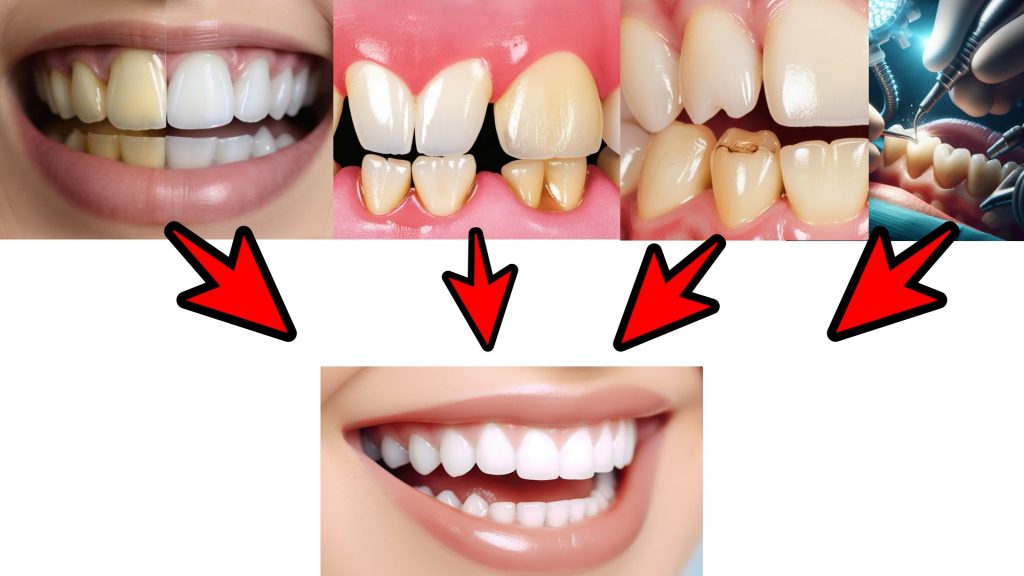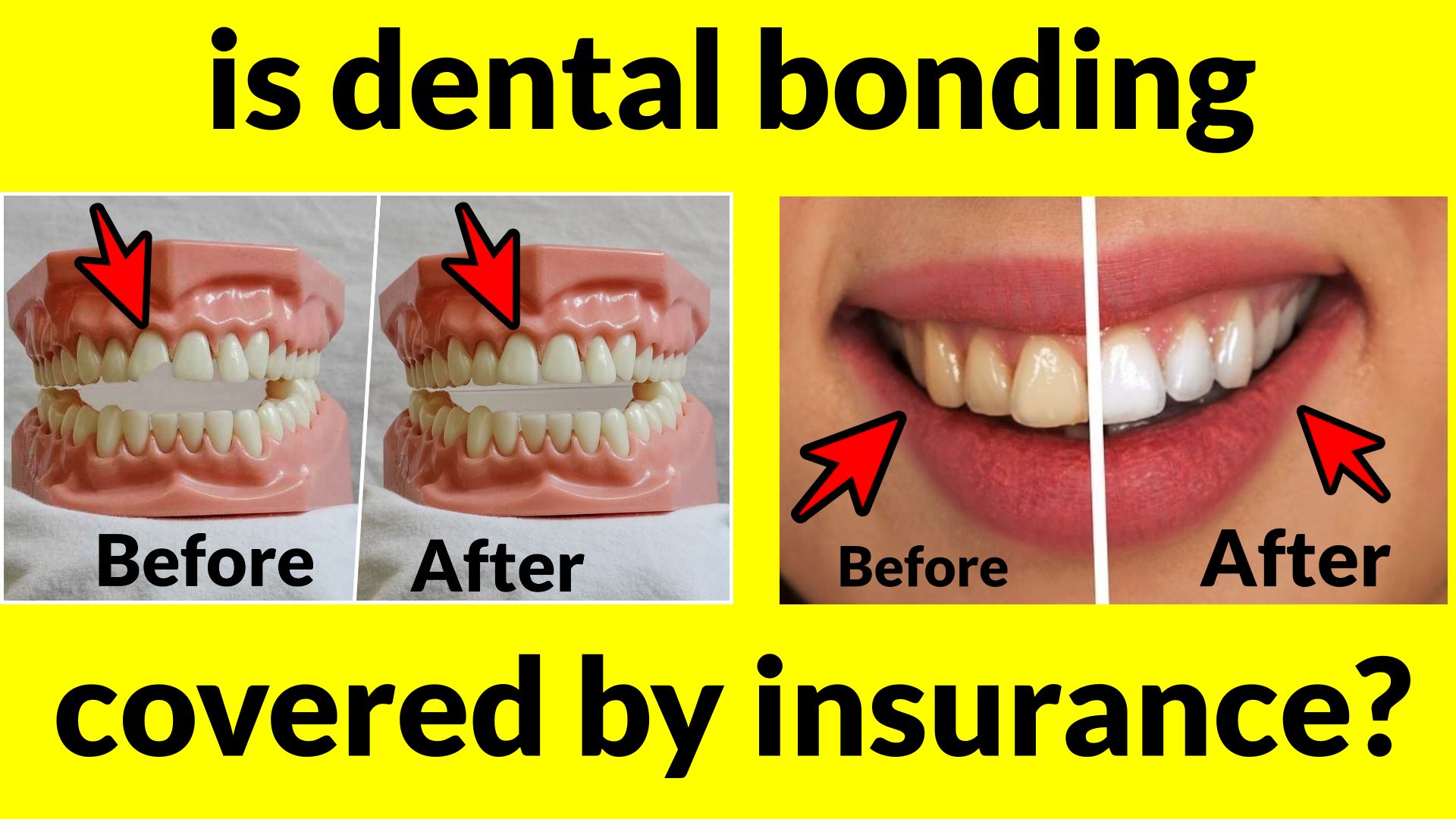In this article, I explain in detail when dental bonding is covered by insurance and when it is not. Here is the complete guide on a single page, after complete research.
What is dental bonding?
Dental bonding is a procedure in which tooth-like natural colored resin material is applied to the teeth to repair decayed, fractured, or discolored teeth, to change the shape of teeth, to close the gaps between gaps, etc., which is then hardened with a special light (UV) in the desired shape.

Teeth bonding is also known as composite bonding. It’s a common procedure in cosmetic dentistry.
- It is generally a cosmetic procedure.
- It lasts for 3–10 years. Further, after 3–10 years, they may need replacement.
- It is less expensive than veneers, crowns, or dentures.
- It is a quick and easy process, and it needs little recovery time.
- It is generally a non-invasive technique.
- Dental bonding is generally designed for small problems.
- Normally, it is prone to chipping or staining if you bite hard foods or the food that causes staining.
- Generally used for simple works, for complex works, another option may be necessary, like Veneer.
- Typically, dental bonding can be completed during a single visit.

Dental bonding is generally used to fix:
- Tooth chips.
- Closing gaps between the teeth.
- Decayed tooth.
- Tooth fracture.
- Improving the appearance or colour of misshapen teeth
- Changing the shape and size of a tooth
- Exposed tooth roots
- Teeth that have experienced wear and tear, resulting in a reduction of their original structure or surface.
- Cavities in front teeth
- etc.
This method returns the tooth to its original appearance. The color of the resin material blends into the original colour of your teeth and matches the teeth.
Insurance Coverage
Insurance coverage for dental bonding depends on many factors and situations ( example, a dental insurance plan, purposes like medically necessary or cosmetic purposes, in-network or out-of-network providers, etc.), but in general, the insurance company provides the insurance costs for dental bonding when the procedure is medically necessary (which means functional or restorative purposes, protective purposes, and not cosmetic purposes). Insurance companies typically cover procedures when they are medically necessary.
In general, dental bonding is considered a cosmetic procedure. That’s why all dental insurance may not provide coverage. But some insurance providers cover some of the cost of the dental bonding. In certain situations, cosmetic procedures can also be covered when they are medically necessary.
If the dental bonding procedure is required for both cosmetic and dental health improvement, then insurance can also be covered.
However, if you are filing an insurance claim exclusively for cosmetic purposes, such as enhancing appearance or closing gaps between the teeth, insurance coverage may be nothing or limited.
Some insurance plans impose restrictions on the number of cosmetic procedures they will cover within a specific time frame.
Moreover, to determine whether your dental insurance plan provides coverage or not for dental bonding, it is advisable to directly contact your insurance provider, including any limitations, exceptions, or criteria for reimbursement or coverage.
It is recommended to confirm with your insurance company and dentist office for any query and obtain pre-authorization with the help of a dentist if required before scheduling any appointments to clarify the expected costs and coverage.
Overall, your insurance company and your dentist will help you with dental bonding.
Below are some examples of medically necessary dental bonding or cosmetic dental bonding. With examples, you can clearly understand what these are.
Examples: when dental bonding is medically necessary
- Teeth that are creating pain: if dental bonding is applicable for fixing this problem, then that is medically necessary.
- Filling a cavity or fixing a minor chip because it affects chewing, this is also a medically necessary procedure.
- Teeth damaged due to decay or trauma; if teeth bonding is applicable, then teeth bonding is medically necessary.
- An accidentally cracked, fractured, or chipped tooth creates issues.
- Replacing filling: Causing infection because it needs to be replaced with a filling.
- Filling cavities because, without dental bonding procedures, it creates issues while eating.
- Covering exposed tooth roots: gum recession can result in the exposure of tooth roots, leading to sensitivity and an elevated risk of decay. The application of dental bonding can cover and safeguard the exposed roots, mitigating potential complications and enhancing overall oral health.
- Restoring Functionality: Because of the wear and tear of teeth and the inability to eat, chew, bite, or perform essential functions, dental bonding may be necessary to restore functionality.
- Fixing Misaligned Teeth: because it is creating discomfort while eating.
- Protecting Teeth from Further Damage: weakened teeth can be protected by dental bonding, which helps to maintain their structural integrity and functionality.
Examples of cosmetic procedures:
- Closing small gaps or enhancing the appearance of the teeth for beauty purposes (for a good smile)
- Repairing Chipped or Fractured Teeth: for restoring their natural appearance This is a cosmetic procedure that improves the overall aesthetics of the smile.
- Closing Gaps Between Teeth: If there are small gaps or spaces between teeth, dental bonding can be applied to close them, creating a more uniform and aesthetically pleasing smile.
- Tooth Reshaping
- Covering Tooth Discoloration: If any tooth is not very white, dental bonding can be applied to make it white like the natural teeth.
- Improving the Appearance of Misshapen Teeth or irregular contours
- Filling small imperfections, such as small pits, grooves, or irregularities on the tooth surface, for a better look of teeth
- Front Teeth Correction: Front teeth that are visible when smiling or talking—if they are not looking well—can be cosmetically improved with dental bonding.
- etc.
Why do insurance companies not cover tooth bonding?
- Because it is typically considered a cosmetic procedure.
How do you get an insurance claim?
- Check your insurance plan, read coverage, then contact your insurance provider and get information on whether you are eligible or not for dental bonding according to your plan.
- Talk to your dentist (in network);
They’ll guide you in determining whether you qualify for teeth-bonding coverage in accordance with your specific plan details. if you are eligible, and if your insurance company demands pre-authorization, your dentist will initiate the authorization. - Pre-authorization: submitting a document for treatment to the insurance provider; thereafter, they will judge the necessity of the treatment and determine the extent of coverage. It is recommended to file a pre-authorization 10–20 days before the dental bonding.
- Lastly, be ready to pay – out-of-pocket costs if required.
Cost of dental Bonding
The cost of dental bonding varies according to the-
- Location of the dentist office.
- Number of teeth.
- Type of treatment and on difficulty level or complexity
- Experience and skill of the dentist.
- Area of the treatment.
- Additional treatments.
However, in the USA, the cost of dental bonding is between $100 and $1000 per tooth. If you have a little problem related to your teeth, it can be cost-effective for you. For more complicated problems related to teeth, other procedures can be effective for you.
Dental bonding is less expensive than other procedures like veneers and dental crown.
Related article – Is vaneers covered by insurance?
Tooth bonding cost with insurance
Generally, it ranges from 90 $ to 300$ which is the out-of-pocket cost; the rest, 50–80%, may be covered by your insurance company; some providers also cover more or less than this. However, cost depends on many factors, which I have shared in the upper section.
tooth bonding cost without insurance
Between 100$ to 1000$. However, cost depends on many factors, like – location of the dentist office, the number of teeth involved in the treatment, etc.
If your insurance company does not cover it, you can consider these options.
- Negotiate price.
- Discuss alternatives.
- Consider Discount Dental Plans
- Consider Health Savings Accounts (HSAs) or Flexible Spending Accounts (FSAs)
- Check the price of another dentist.
- Explore community or dental school clinics
- You can consider donated dental services (DDS), which are helpful for vulnerable people. It provides free, high-quality dental treatment.
- Who is eligible?
- Individuals with disabilities, medically vulnerable patients, and senior citizens (at least 65 years old) who can’t pay for or afford dental care and need medically necessary dental care If you meet these criteria, then you are eligible for this.
- Who is eligible?
- Apart from this, you can explore the government assistance program for dental costs.
- Other than this, there are many other methods, which you can explore by doing a Google search.
FAQ
Q. how many years is the Life of dental bonding ?
3-10 years.
Q. Is bonding cheaper than other dental procedure like veneers?
Yes, it is much cheaper than other.
Q. After dental bonding, how it looks?
It looks like your natural teeth, it totally match with your original teeth.
Q. What is the average cost for dental bonding without any insurance?
100$ to 1000$.
Q. is dental bonding is medically necessary procedure or cosmetic procedure.
It can be both, according to the condition of your teeth. If you are going to improve the look of your teeth, this is an example of a cosmetic procedure. If you are going to fix fractured teeth because you are unable to eat properly, this is an example of a medically necessary procedure.
